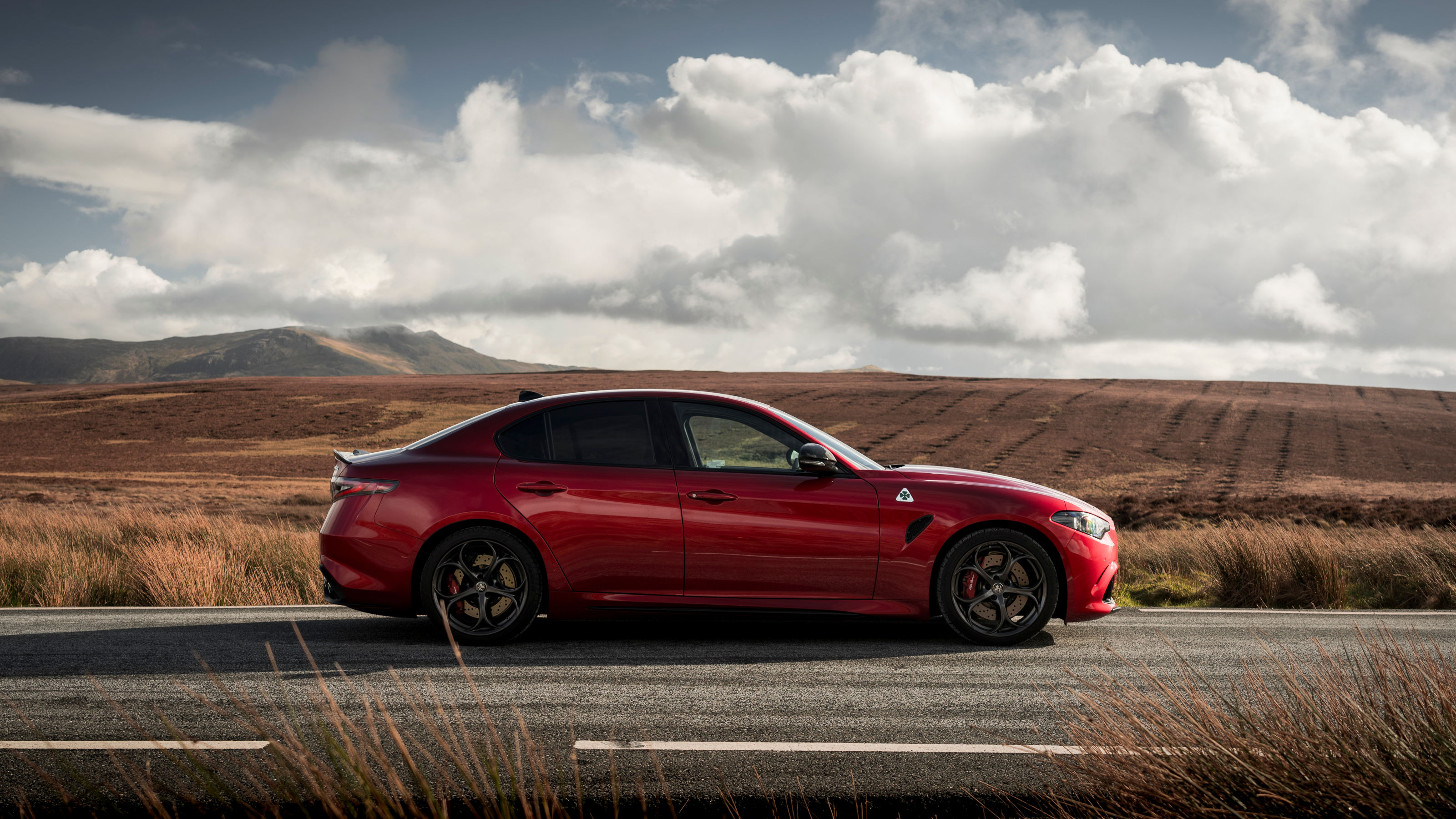
It’s hard to be objective about Alfa Romeos. Historically, the company’s products have often appeared more emotive than practical, whether by accident or design, and the modern iteration of the company – one of many in the giant Stellantis portfolio – seems to have taken this baton and run with it.
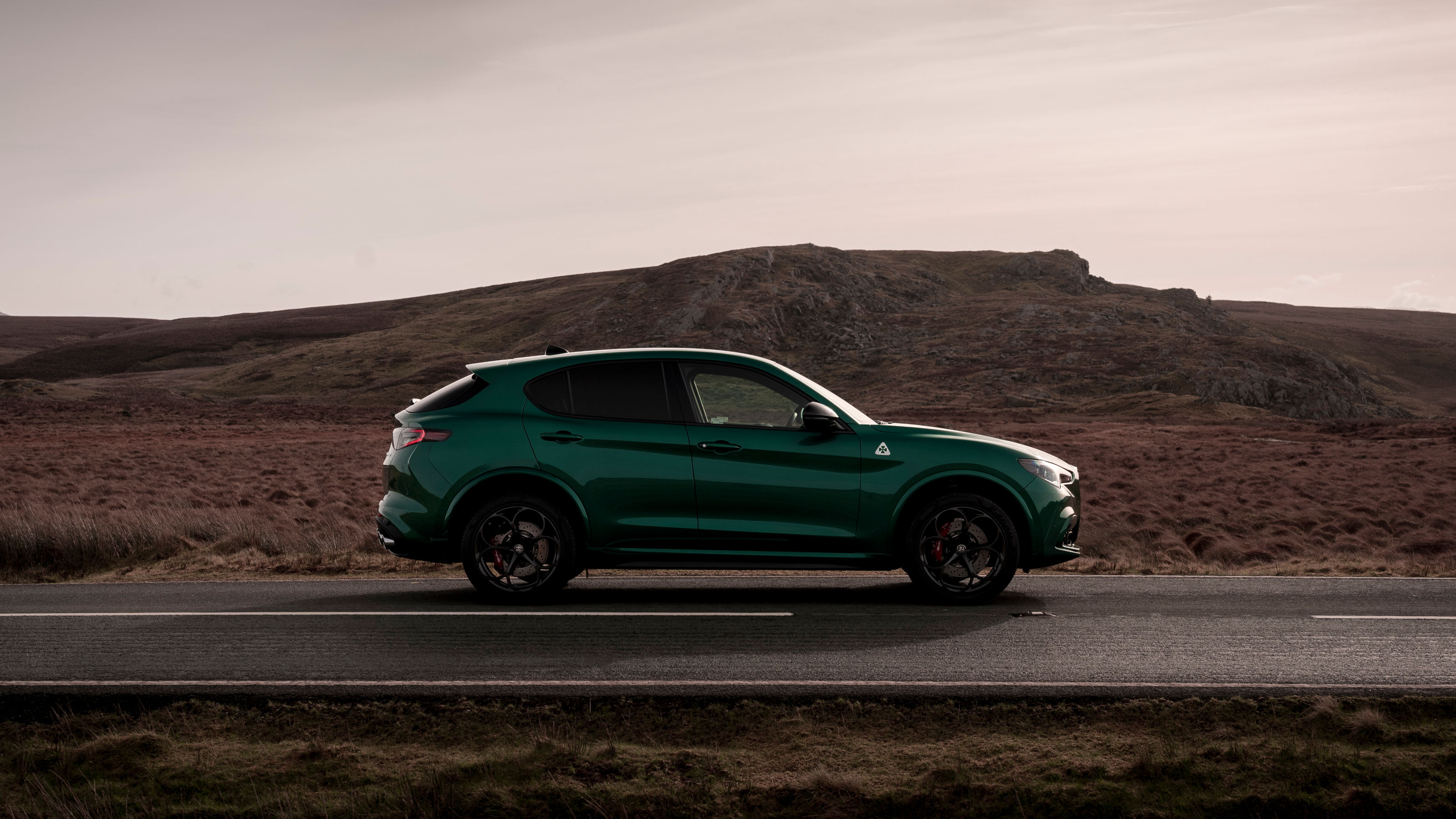
For now, the emotive peak of aspirational driving is still performance, and preferably performance with internal combustion at its heart. With this in mind, Alfa Romeo has taken its twin flagships, the Stelvio Quadrifoglio and Giulia Quadrifoglio, and given them a final update before their genus is confined to the history books.
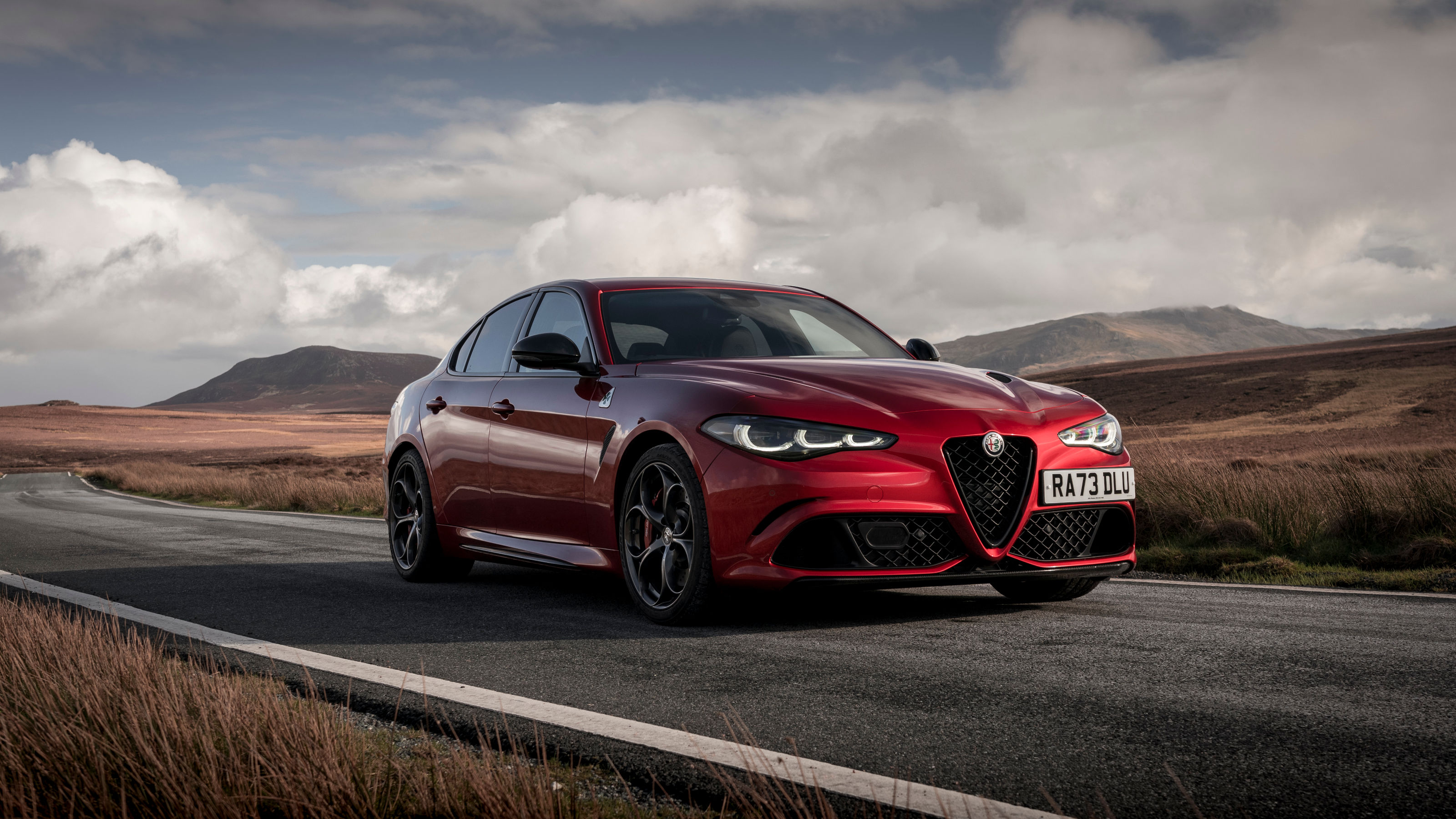
A quick word about ‘Quadrifoglio’. Meaning ‘four-leaf clover’, the symbol has been associated with Alfa Romeo’s racing division for over a century. The lucky motif first showed up on the flanks of works driver Ugo Sivocci’s 1923 RL. Sivocci went on to win that year’s Targa Florio road race in Sicily, and the emblem stuck, thanks to a combination of marketing, superstition and raised profile (Sivocci’s death at Monza a few months later – in a car that didn’t have the Quadrifoglio logo – only added to the mystique).
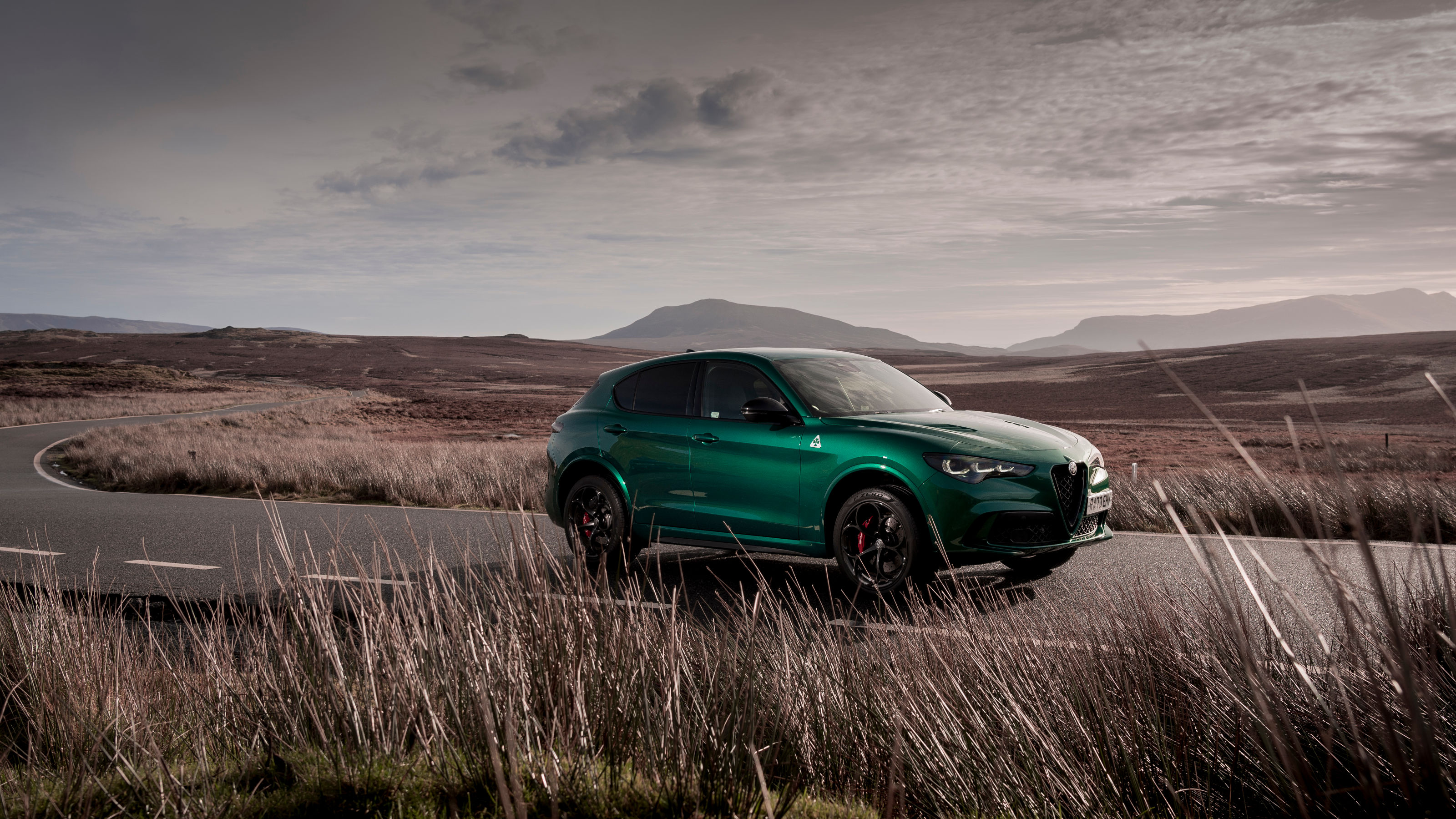
From the 1970s onwards, the clover adorned Alfa’s more sporting road cars, which takes us up to the present day. First up, the Stelvio Quadrifoglio, which heads up the company’s brace of SUVs, the ‘regular’ Stelvio and the smaller Tonale. Updates are relatively light on the ground, but include new headlights, a greater emphasis on carbon fibre in the interior and a slight power bump.
Alfa Romeo Stelvio Quadrifoglio
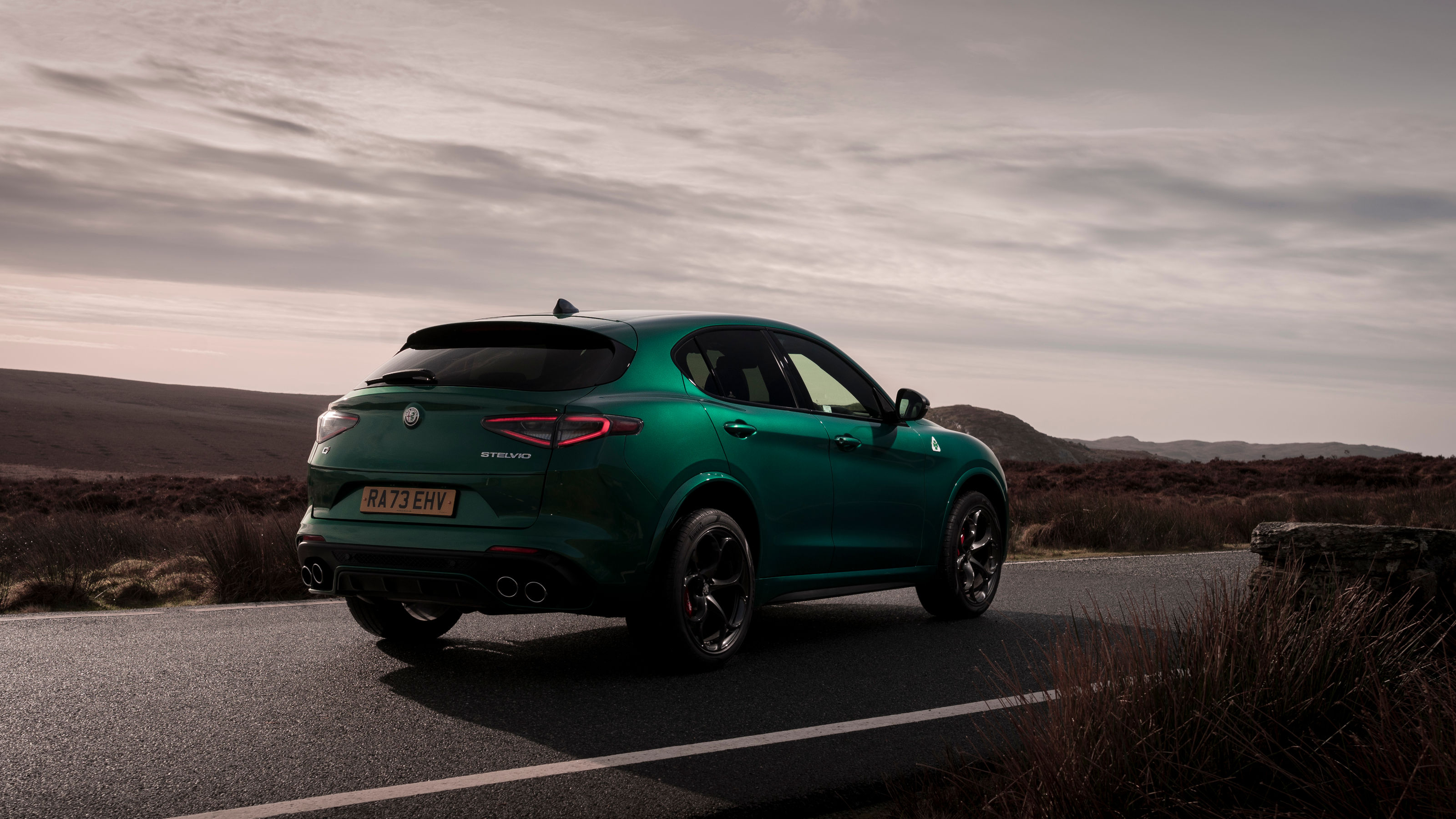
Driving enthusiasts will be happy to hear that the Stelvio Quadrifoglio has reverted to an old school mechanical limited slip differential, a simpler, more predictable way of getting the power down across the rear axle. This is four-wheel drive, after all, and like all performance SUVs, it’s capable of putting the power to where it’s most needed for the most efficient cornering. Such nuances only really come out on track, and although we were able to sample the big SUV on an unrestricted bit of road, there wasn’t really enough space to safely explore the limits.
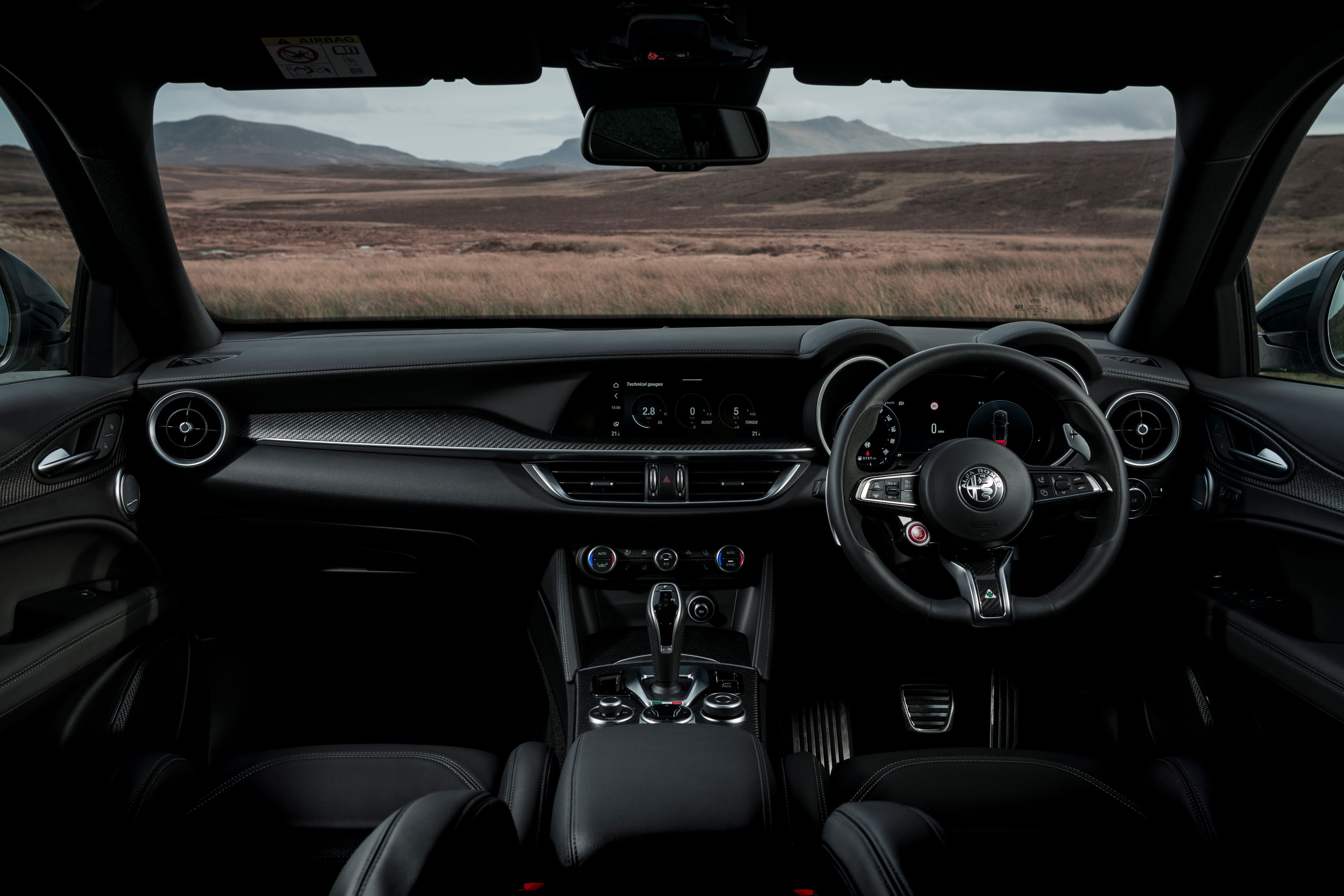
It's safe to assume that said limits exist far outside the orbit of most people’s skillsets, which brings us to the main issue with this car. Despite having driving dynamics and performance capabilities at the upper end of the spectrum, a rapid SUV is always going to run into compromise somewhere. At nearly 2,000kg, it’s immensely heavy, not especially economical, noisy and doesn’t really provide a massive space premium over a smaller, lower car.
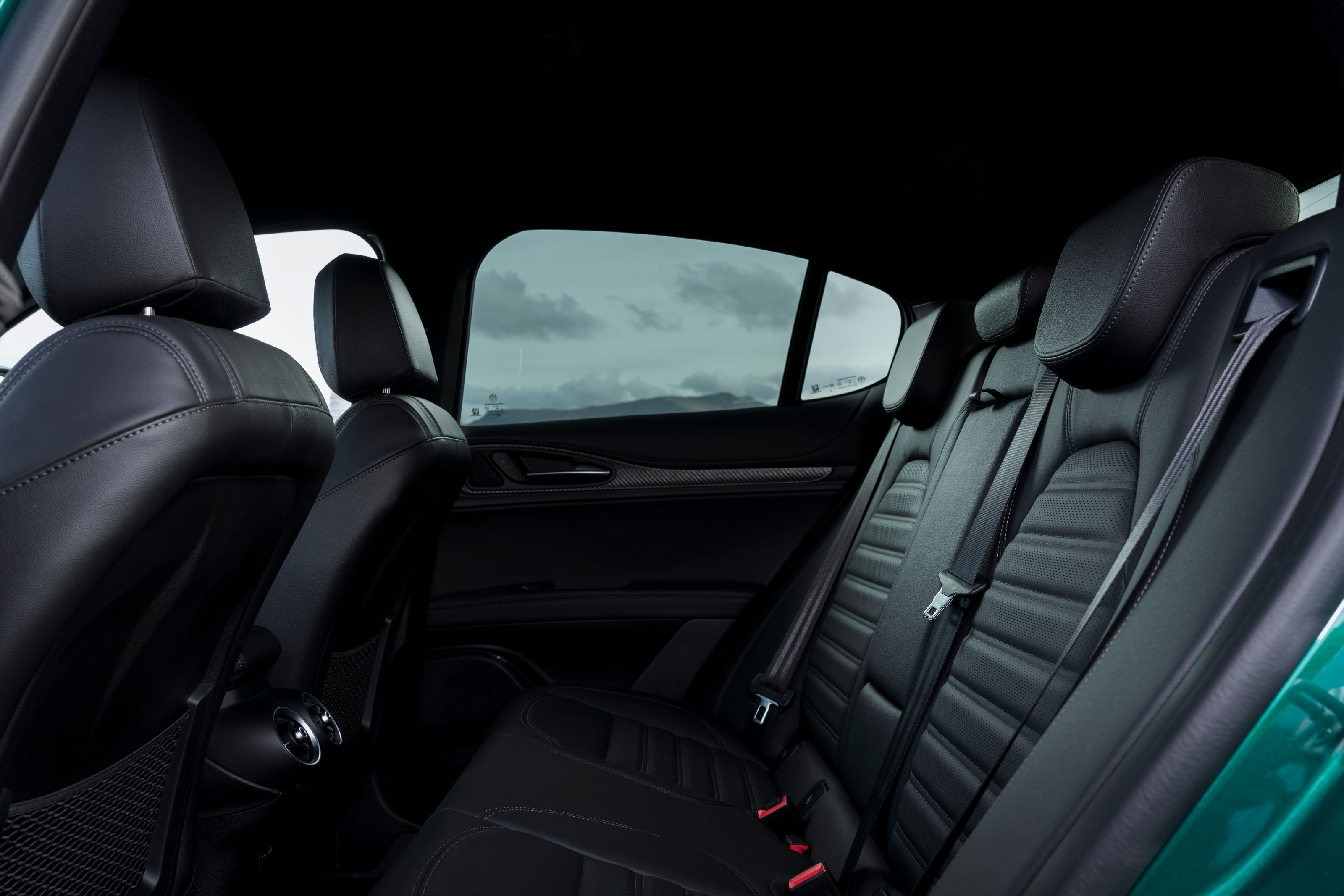
Alfa reckons that the next-gen Quadrifoglios will be able to eschew fossil fuels altogether – the brand aims to go zero emission by 2027. While the fast Stelvio is undeniably characterful, it’ll be interesting to see if these qualities can be carried over into the EV world.
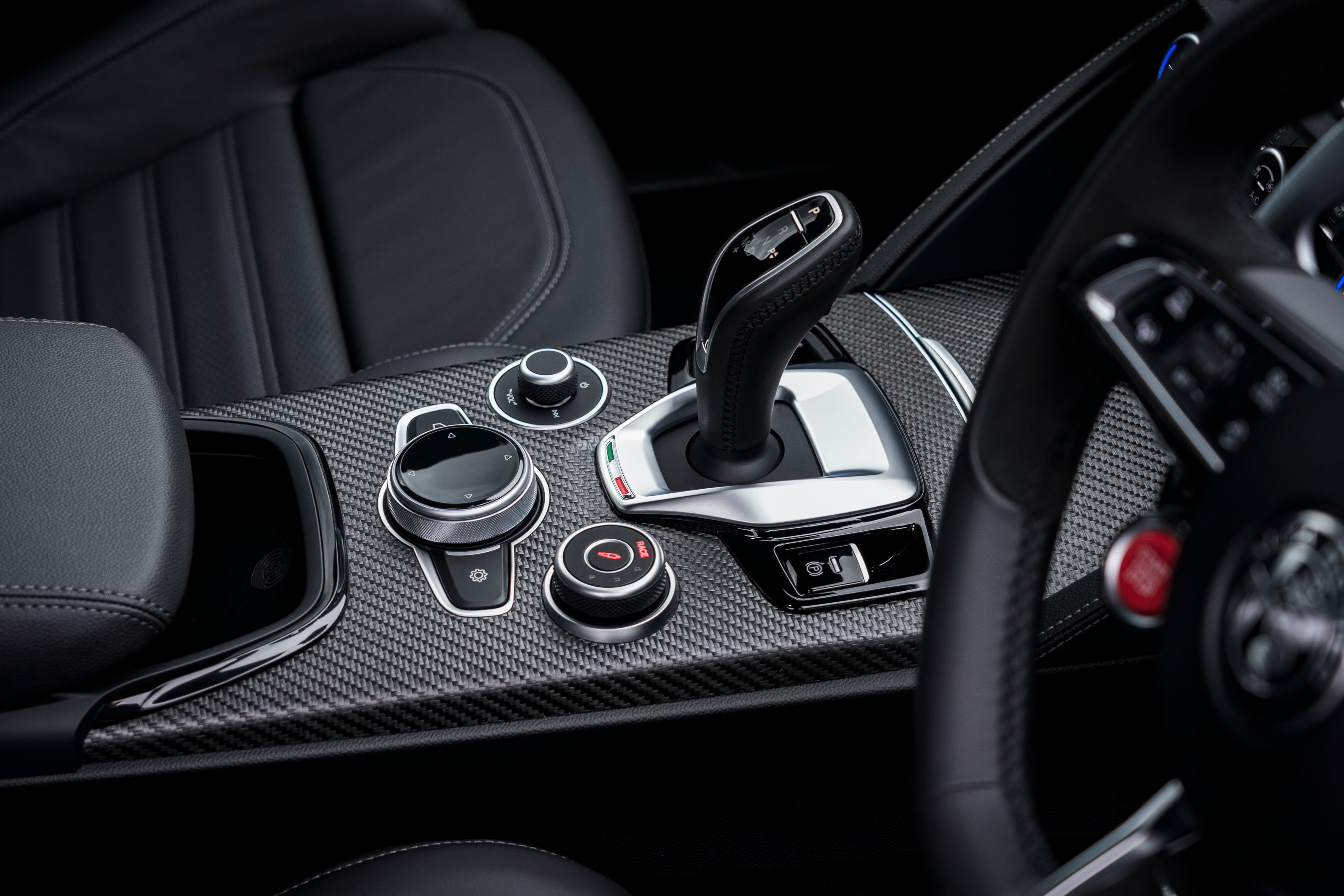
Alfa Romeo Giulia Quadrifoglio
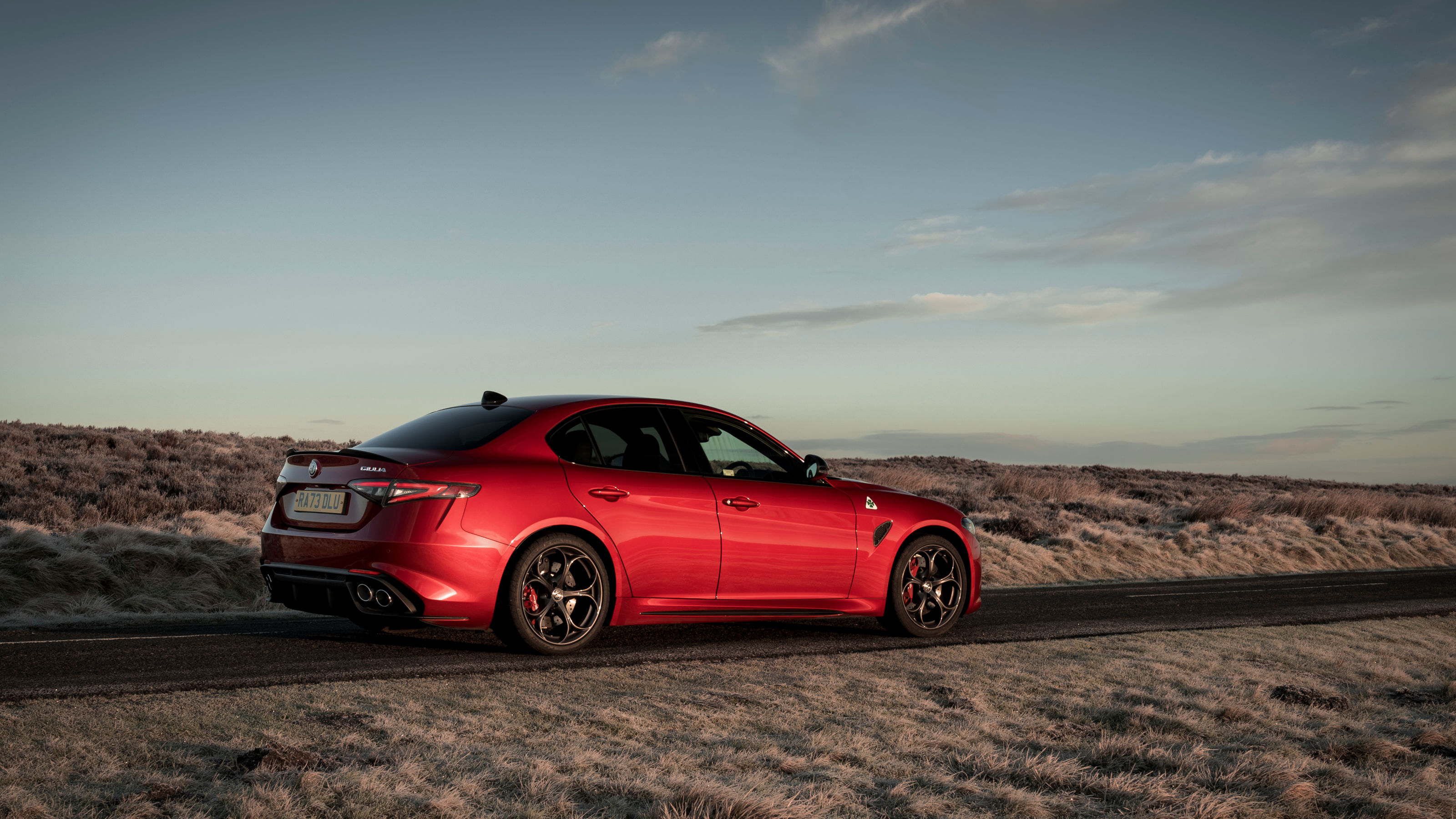
A performance SUV will always be a boorish choice, whereas a sporting saloon car has a little bit more class (although that window is closing fast). The Giulia is a pretty car, a worthy successor to Alfa’s long history of making ordinary saloon cars and hatchbacks with more elegance and charm than their rivals. In Quadrifoglio form, it’s a little more brutish, but the essential grace of the design isn’t compromised.

When we tried the original Giulia Quadrifoglio, six years ago, the takeaway was that the car tried a little too hard to impose its raucous, race-bred character on the driver. If anything, the new version is even more OTT, but rivals have raced to catch up, upping the ante on the amount of power and performance customers want to feel at their fingertips every time they get into their car.
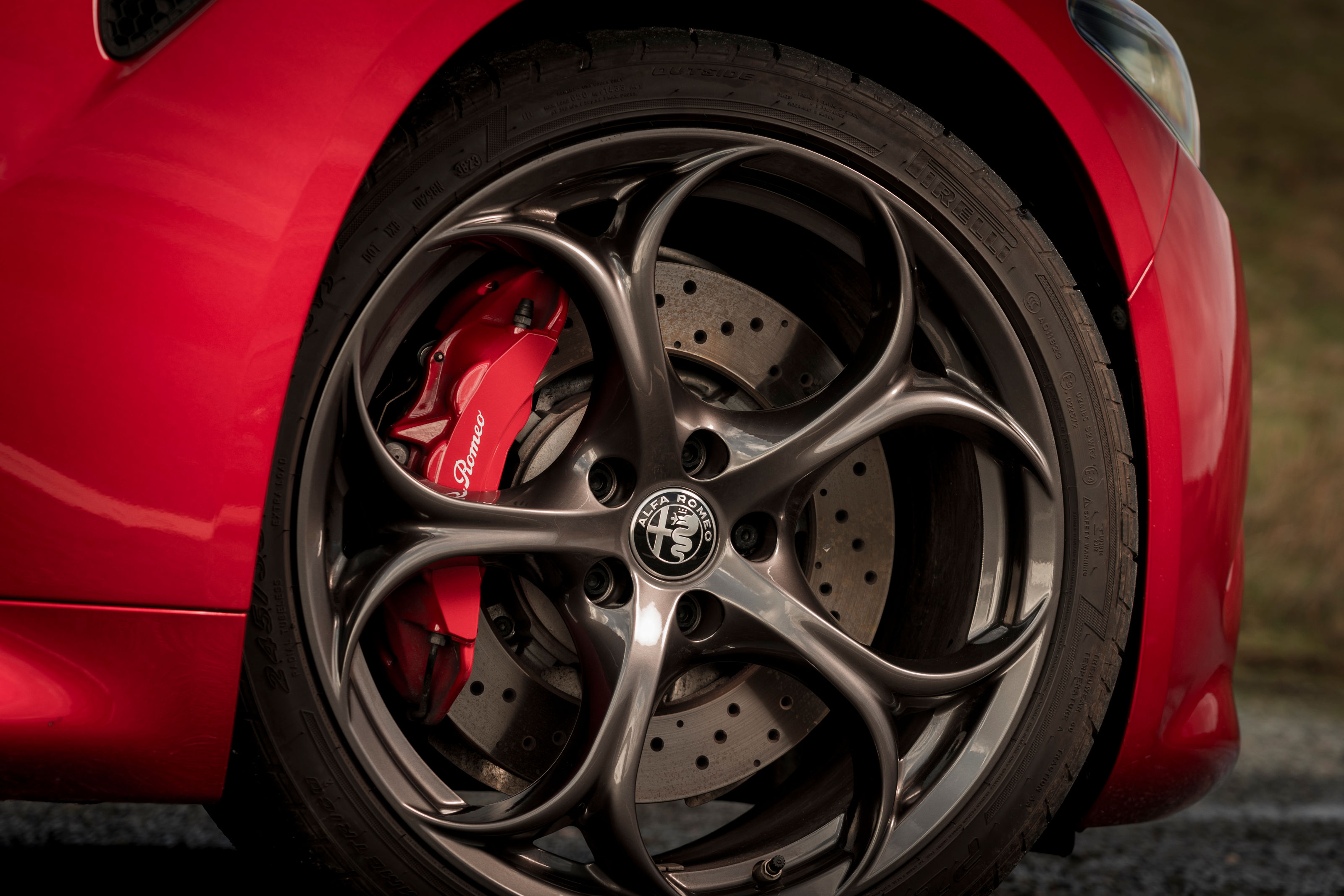
This might sound a little wearing – and it is – but the bottom line remains; if you don’t want every journey to be inevitably compromised by road conditions and the limits of the law, then you’d be better off in a tamer, less aggressive version of the car. As with the larger Stelvio, a twin turbocharged V6 provides the shove and the soundtrack, with no accommodation of any kind of hybrid assistance.
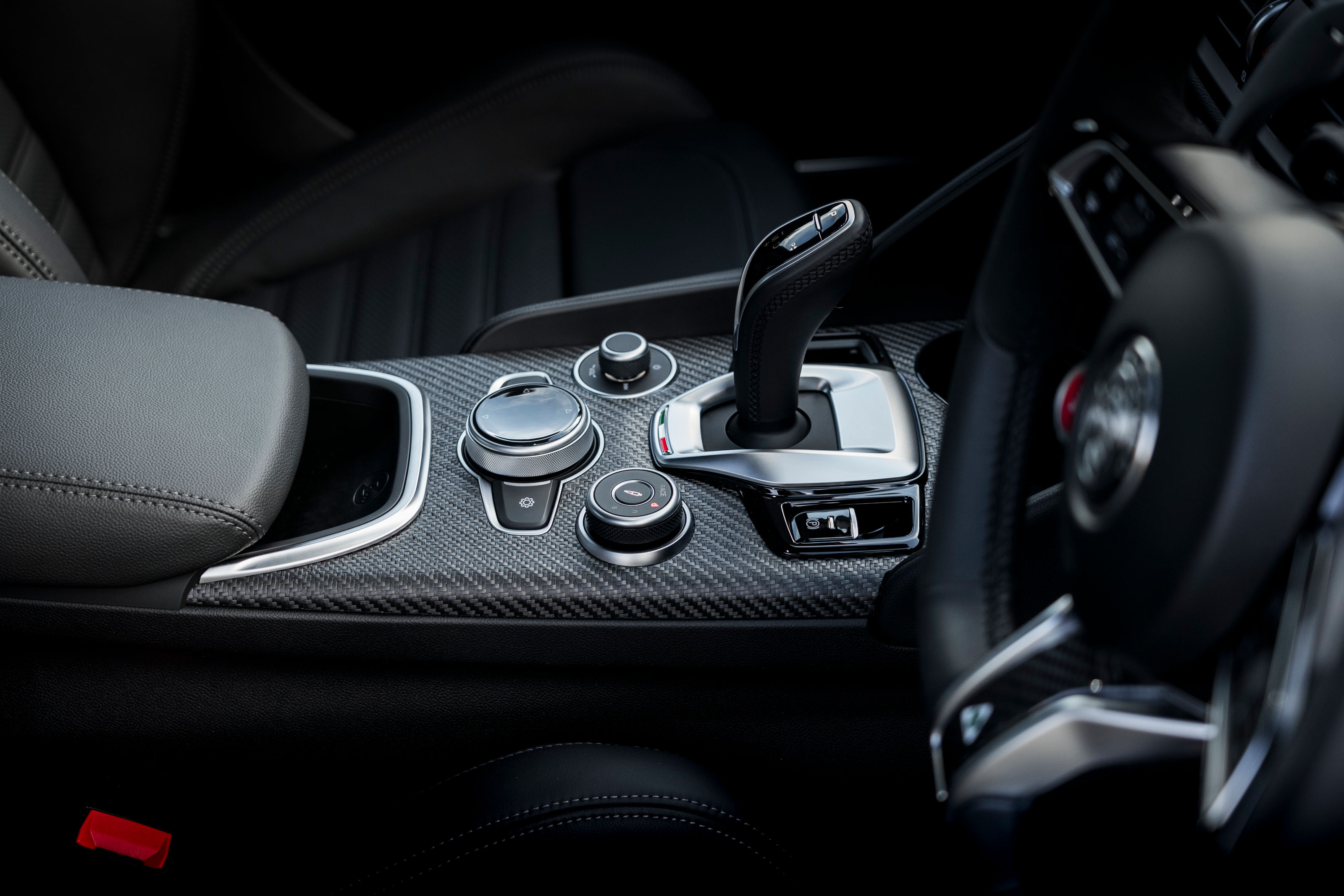
The cockpit is similarly moody and carbon-filled, although the lower driving position is a better fit for the power on hand. It feels more balanced and rewarding to drive, and even if you stay in the ‘N’ section of Alfa Romeo’s rather obtuse DNA drive mode system (Dynamic, Natural and Advanced), it has more than enough throttle response and fluidity to keep you fully engaged.
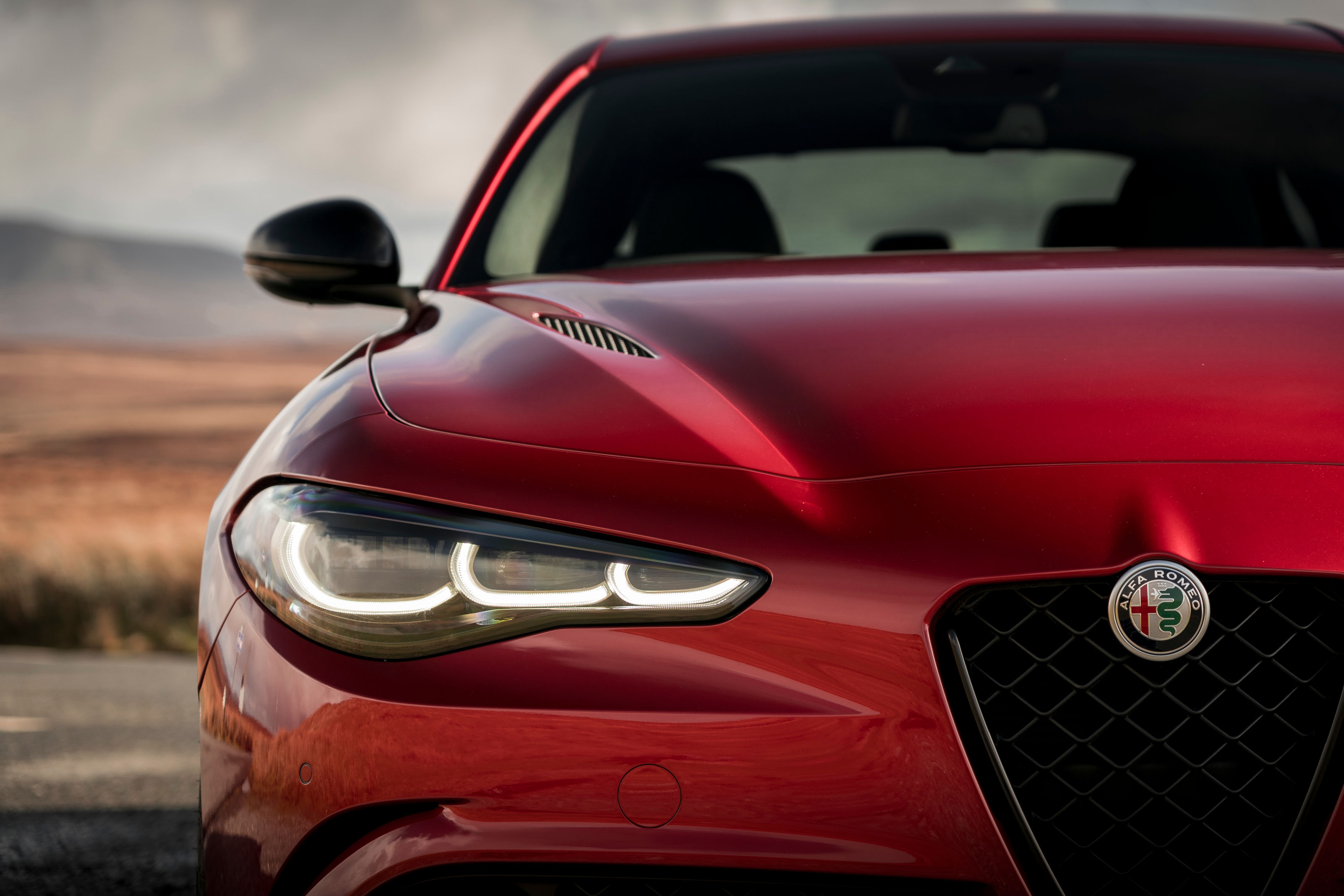
Last year’s unveiling of the stunning 33 Stradale demonstrated that Alfa Romeo knows that its shift into the electric era will need to be accompanied by drop-dead gorgeous design or else it’s a non-starter. Given that the 33 Stradale is priced at £1.7m, this pair of Quadrifoglios looks like a bargain. However, Alfa shouldn’t lose sight of the mass-market approach that has made it a viable alternative over the decades.
Alfa Romeo Giulia Quadrifoglio, £78,195, Alfa Romeo Stelvio Quadrifoglio, £87,195, Alfaromeo.co.uk, @Alfaromeouk







